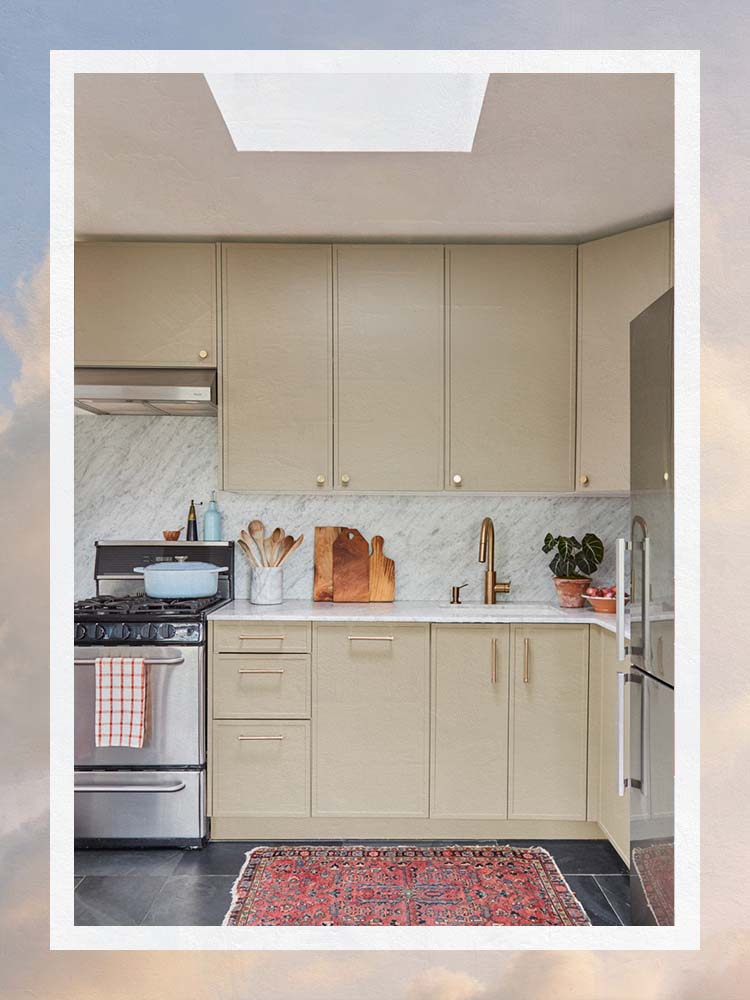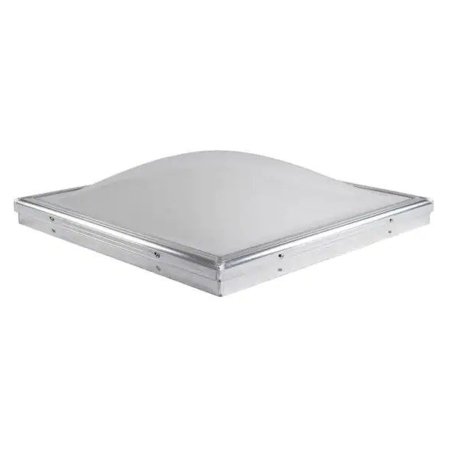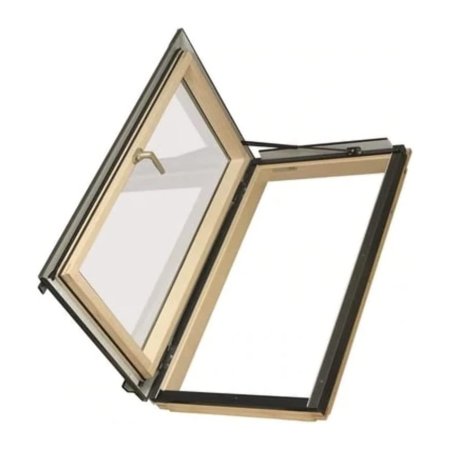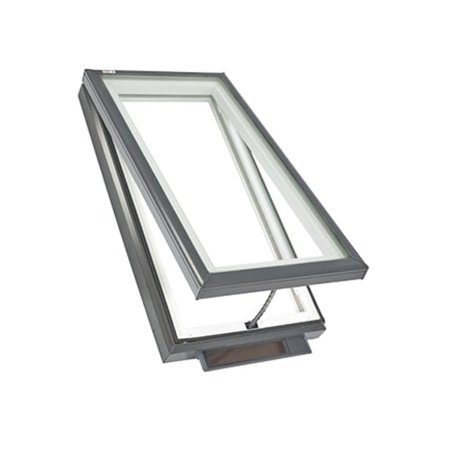We may earn revenue from the products available on this page and participate in affiliate programs.
Reading up on Domino’s shopping guides is like having your own personal product concierge. We do the tedious part—deep-dive research, hands-on testing, and tapping experts for advice—so all you have to do is hit “add to cart.” That’s why we call them Simply the Best.
Think about when the sun feels its brightest—you’ve probably gotten really excited about the warm glow on your skin or pockets of light flooding in through your windows. But not all rooms have the luxury of a surplus of windows, and you might be left with florescent lighting instead—yikes. Strategically placing skylights in your space, so that rays can shine through from above, can make your home a haven for natural light.
“It creates a private, nondirectional source of light and view,” says architect Barrett Cooke, cofounder of Arterberry Cooke. “It gets you out of whatever urban environment you’re otherwise staring at.”
When choosing a skylight, you’re going to want to consider your current roof structure, your floor plan, and what direction the glass opening will be facing. We pored over our favorite brands and models to find the best skylights, so you can open up your home.
Our Favorites
- Best overall: Velux Fixed Deck-Mount Skylight
- Best value: Gordon Fixed Curb Mount Skylight
- Best widow skylight: Fakro Egress Roof Window
- Best solar skylight: Velux Solar Powered Fresh Air Curb-Mount Skylight
- Best tubular skylight: Velux Self-Flashing Aluminum Tubular Skylight
- Best smart skylight: Marvin Awaken Skylight
Best Overall: Velux Fixed Deck-Mount Skylight
Best Overall
Shop NowType: Deck mounted | Glaze: Glass | Warranty: 10 years | Size: 21-by-37 7/8-inches
What we like:
- Energy efficient
- Wide pitch range
- Leak-proof
Worth noting:
- Requires flashing
- Does not open
Why we chose it: This deck-mounted pick has a wide pitch range, which will work with most roofs.
After 75 years in business, Velux’s reputation precedes itself when it comes to skylight windows. Cooke says it’s her go-to every time for home projects thanks to their longevity. Not only does it allow more sunshine into your space, but it’s an energy-efficient way to heat your home during the winter months. It can be used on a roof pitch between 14 and 85 degrees for a good range of roofs. Note that installation does require additional skylight flashing, which is another layer in order to seal it to prevent any leakage of water or heat, and it cannot be vented or opened. True to the brand’s quality, it comes with a few features that make the upkeep way easier and make it stand out from the rest, like a neat glass coating for fewer cleans. For snowier areas, know that there’s also a 10-year hail warranty for potential glass breakage.
Best Value: Gordon Fixed Curb Mount Skylight
Best Value
Shop NowType: Curb mounted | Glaze: Double dome glazed | Warranty: 10 years | Size: 22.5-by-22.5 inches
What we like:
- Single installation
- Not full-on light
- Unable to see through
Worth noting:
- Plastic coating
Why we chose it: This cube-shaped skylight offers clouded light that isn’t too bright.
Skylights can sometimes result in toasty temps in the room where they reside on any given sunny day. For those who want overhead light that still feels natural without the beaming heat of direct sunlight, this double dome glazed one from Gordon checks that box. And because it’s curve mounted, it only requires a simple leak-proof installation, plus its durable aluminum frame will help it stand up to the elements over time.
Its smaller size offers a nice cube of light in any living room or bathroom. And the fact that it is not made of pure glass makes it wallet-friendly. To note: You will need an integral condensation gutter in order to avoid any possible condensation from slipping between the panels. It can be applied on flat or pitched roofs as long as the slope is between zero and 60 degrees.
Best Window Skylight: Fakro Egress Roof Window
Best Window Skylight
Shop NowType: Deck mounted | Glaze: Double dome glazed | Warranty: 10 years | Size: 24-by-38 inches
What we like:
- Allows fresh air in
- Emergency exit
- Reflects heats
Worth noting:
- Need to be aware of elements
- A bit pricier
Why we chose it: Get an extra view with a skylight that opens up to the world.
To let in sunlight and fresh air, this window skylight from Fakro is a great choice and has heat-reflecting, double-glazed tempered glass to get light without the feeling of boiling. But you’ll still gain a full frame of 24-by-38 inches of additional light to shine through your ceiling. It opens up to the left, which can double as an emergency exit and allows you to let any stuffy air out. While it’s suitable for roof pitches from 15 to 55 degrees, you also need to be aware of the weather—otherwise you may find your home rained on in the middle of the day. It is a bit pricier compared to other basic skylights, but it offers more features than most.
Best Solar Skylight: Velux Solar Powered Fresh Air Curb-Mount Skylight
Best Solar Skylight
Shop NowType: Curb mounted | Glaze: Glass | Warranty: 10 years | Size: Varies
What we like:
- Opens with the sun
- Tax credit for solar power
- Noise blocking
Worth noting:
- Most expensive option
- More complicated installation
Why we chose it: Smart and solar-powered for next-level natural lighting.
Your skylight is already facing the sun, so it might as well be powered by it. Velux has upgraded its most popular models to be solar powered. The Fresh Air skylight allows for natural light to shine in, and its solar panel captures daylight in order to charge an operator and control system. When the sun goes down or on a cloudier day, you can open the skylight with a remote control (and get extra room ventilation).
Like all Velux products, this one features superior laminated glass with a Neat glass coating to keep sunlight in and external noise out. Plus the solar power aspect allows you to receive a federal tax credit on both product and installation costs, making it a bit easier on the wallet.
Best Tubular Skylight: Velux Self-Flashing Aluminum Tubular Skylight
Best Tubular Skylight
Shop NowType: Tubular | Glaze: Acrylic | Warranty: 10 years | Size: Up to 48 inches
What we like:
- Ideal for bathrooms and small spaces
- Not as intense lighting
- Less intrusive
Worth noting:
- Less natural light
Why we chose it: The under-the-radar way to let in the sun’s rays.
The less intrusive design allows you to bring natural light into a uniquely designed space where a traditional skylight can’t be installed. It’s totally tubular! While the area of the light is smaller, the tubular structure uses a reflective rigid tunnel to keep the light shining as it makes its way down through the tube.
Perfect for small areas like bathrooms, closets, and hallways, it makes it so that you won’t have to turn on an ugly fluorescent light when entering an otherwise windowless area. The tubing can go up to 48 inches and be applied on a roof pitch between 14 and 60 degrees.
Best Smart Skylight: Marvin Awaken Skylight
Best Smart Skylight
Shop NowType: Deck mounted | Glaze: Glass | Warranty: 10 years | Size: Varies
What we like:
- Mimics sunlight temperature
- Opens on all 4 sides
- Smart home–compatible
Worth noting:
- Expensive
Why we chose it: An option that is as smart as your home is.
While skylights traditionally just provide additional lighting, the Marvin Awaken Skylight takes things to the next level. Opening on all four sides, it allows for quicker ventilation—and will automatically close if upcoming rain is detected. Built-in LED lighting adjusts to the ideal color temperature of natural light, which makes things easier on your eyes and can soften natural light on brighter days—or when you want to set the mood. Plus tempered and laminated glass ensures that the skylight is both durable and heat resistant.
Everything from opening the shades to closing the window can be done at the touch of a button from a smart app (it’s also Alexa and Google Home compatible). This gives you greater control, such as alerts when the unit closes after sensing rain or when there’s a change in indoor VOC levels.
How We Chose These Products
When it comes to selecting a skylight, you need to keep your roof and floor plan in mind, as well as where the skylight will be facing. From there, you can look into what skylight is best for your needs, which is why we selected a variety of styles. We stuck to options that fit most roof types, have lengthy warranties and minimal upkeep, and are durable. We also tapped some industry leaders to determine how to best install them, as they’re being added to more and more homes.
Our Shopping Checklist
Type
There are three main types of skylights, each with its own pros and cons based on price, installation, and any special features that keep the light streaming through.
Fixed: These are the traditional skylights that do not open but provide plenty of natural sunlight from up above and typically have some form of tempered glass to reduce the amount of heat that comes through. This also breaks down to deck-mounted and curb-mounted options, with the former “hugging” the roof and the latter sitting more on the roof. While deck mounting does have a less visible profile, it does require additional installation to get that fit.
Ventilated: These skylights can be opened using an extension rod system or remote control to allow some airflow. This makes them ideal for homes in warmer climates, though you need to be cautious about weather changes to avoid any debris or water from coming into your home. When closed, though, they function similarly to fixed skylights.
Tubular: This slimmer style is much smaller and can reach through a second story like an attic. Typically the skylight will utilize an acrylic tube that can reflect light through a diffusion dome at each end for bright yet indirect sunlight. This makes them especially ideal for smaller spaces where you want some natural light but are unable to install a window.
Installation and Mounting
When it comes to installation, Cooke recommends doing so at a point when you’re re-roofing. “[Installing a skylight] does create a weak point, and if the contractors are able to flash it in with the new roofing material, that’s ideal,” she says. The process also depends on if you go with a deck-mounted or curb-mounted option. While both require someone to cut out the shape from the roof and frame the inside, the deck-mounted option needs additional flashing to make it leak-proof, whereas the curb-mounted is framed from the inside.
Dome and Frame Material
Because your skylight will be braving the elements, you’ll need to ensure that both the dome and frame materials are especially durable. Dome skylights are more rounded and typically use polycarbonate and acrylic that should be resistant to hazing and discoloration. Double-check that these materials meet the fire codes in your area, and note that some condensation may appear within the plastic layers over time.
Frame material, on the other hand, can vary to best match your roofing style. Typically it is made of metal, vinyl, or wood, and the curb interior can be plywood, white vinyl, or solid wood. To make it more resistant to breakable or heat loss, there is also vinyl and aluminum siding to hold it together.
Glazing
Without proper glazing on your skylight, your home is going to become a hot box real fast and your window can be subject to breakage. These are the three main glazes.
Plastic: Often used in dome and tubular skylights, this glaze is acrylic and polycarbonate. It allows light in without being completely transparent, which can reduce the intensity of the light and the heat. According to Cooke, it does give more of a ’70s vibe compared to glass. “There’s always the concern that the glass gets milky or between the two layers of the plastic you may get condensate,” she says.
Single: This single layer of glass is the least commonly used because it’s the least durable and the least energy-efficient. However, it does tend to have one layer of either laminated or tempered glass for some heat resistance and durability.
Double: A double-paned window is generally your best bet for both heat- and noise blocking in your skylight. An extra layer makes it more durable, and it will feature multiple layers of laminated or tempered glass, as well as additional insulation. This also tends to keep it cleaner for longer.
Shape
The shape of your skylight is dependent mostly on your roof’s current structure but also on your aesthetic. Do you want a big, long skylight that follows your roof? Or do you want to go for multiple smaller, circular options? While you can’t cut through a support beam, with the right-size skylight, you can get the open ceiling of your dreams.
“Depending on the shape of the roof, it can’t straddle the ridge of the roof, so you’re trying to see how it will align within the roof structure and within the floor plan of the house,” Cooke says.
Ask Domino
Q: How do I decide on a size and shape for my skylight?
You’ll want to first consider the amount of light you prefer streaming in. For bathrooms and hallways, a smaller tubular skylight is best for adding a sliver of natural light to an otherwise dark location. But kitchens and living rooms will fare better with larger rectangular windows. There’s also an increasing trend for wide, round skylights that give more of a spotlight to the space.
“For most projects, we have a skylight in one or more locations,” Cooke says. “I think it’s a very heavily requested thing and it allows us to put ‘windows’ in a bathroom or consider more flexible layouts while providing more natural light.”
Q: How do skylights help with energy efficiency?
When properly selected and installed, a skylight will provide light and warmth that can help minimize electricity and heating costs. But because they are on the roof, you can also end up with unwanted heat during the warmer months or loss of heat during the colder ones. That means you need to make sure it is properly insulated and has glazing that will reflect heat.
Skylights can heat your space, and Cooke warns that sometimes west- or south-facing homes can get pretty warm from the amount of sunlight it will get. That might have you blasting the AC, reversing the energy efficiency, so you’ll want to weigh your options.
Q: How long should a skylight last?
They can typically last between eight and 15 years, as long as they are installed properly. However, factors such as hail and falling tree limbs can damage the glass, which is why a good warranty is essential.
The Last Word
A skylight can completely open up and change the lighting in your home, as long as it is selected and installed properly. The room, roof structure, and floor plan need to be accounted for, but the Velux Fixed Deck-Mount Skylight has a low profile that will work for most living spaces. If you want something that’s a little smaller for a bathroom or closet, the Velux Self-Flashing Aluminum Tubular Skylight is a great choice.






